Motorsport enthusiasts, especially those who never miss a Formula 1 Grand Prix, should be delighted during their visit to the Rétromobile show. Many F1 single-seaters are, indeed, present. In this regard, within Pavilion 2 of Paris Expo Porte de Versailles, the exhibition “The tricolor Formula 1, from the 60s to the present day” should inspire both the young and old. Here is the visit in photos.
There are F1 single-seaters in abundance at Rétromobile. The exhibition “The tricolor Formula 1, from the 60s to the present day” showcases French F1 by presenting historic single-seaters, including the little-known Alpine A500, which marked the beginning of Renault Sport’s F1 journey, before the arrival of Alpine F1 Team in 2021 with the A521.
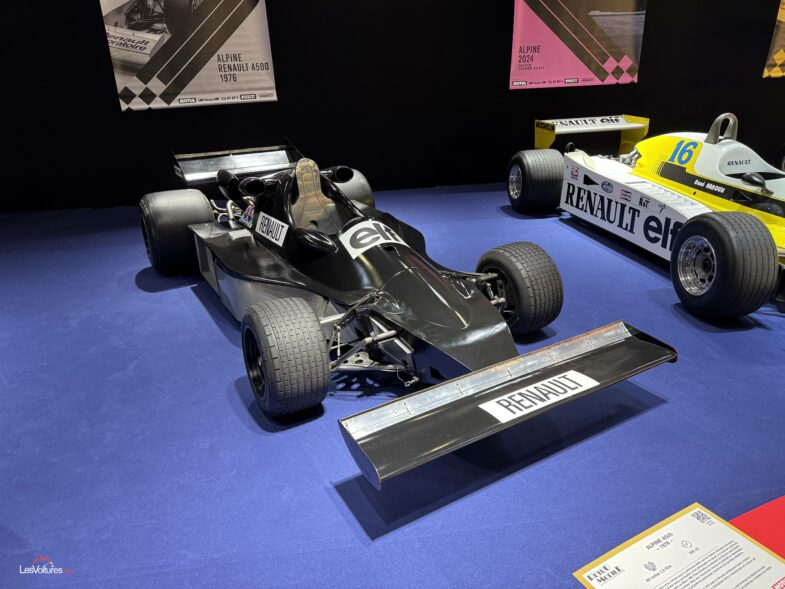
In the 1970s, engineers from Alpine and Gordini developed the Alpine A500, powered by a 1.5 L V6 turbo. Studies conducted by Gordini on this engine also served as a basis for the A440 and then the A441 in the 1975 24 Hours of Le Mans.
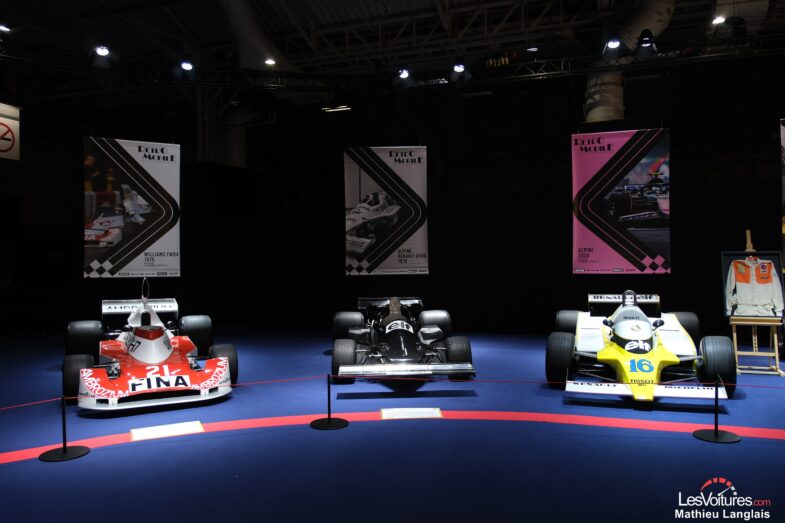
History will remember that Alpine wished to remain independent with the A500, which did not happen. In 1976, the French car manufacturer merged Alpine with Gordini to create the Renault Sport department. Let’s recall that Gordini was already under Renault since 1969. The A500 was “recovered” by Renault Sport before being reliable and optimized, especially in terms of boosting. The 1976 Alpine A500 exhibited this week at Rétromobile never participated in an F1 Grand Prix.
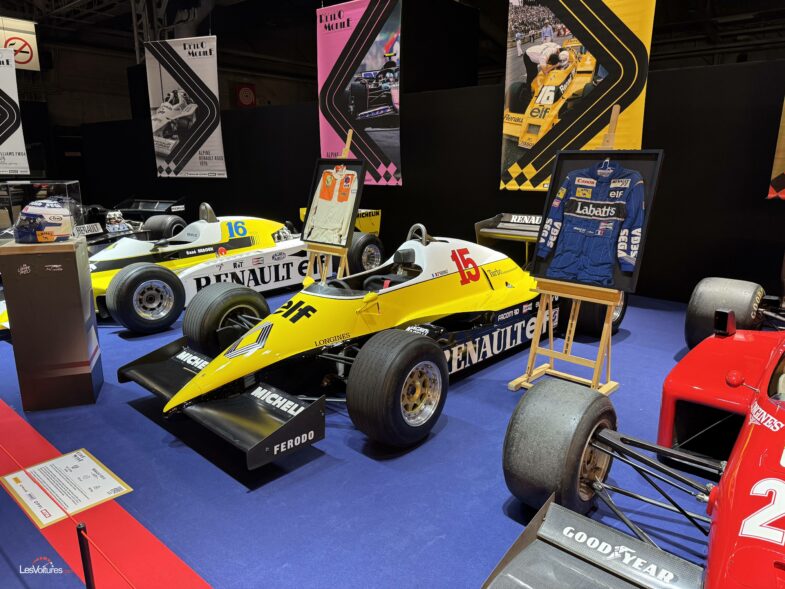
The exhibition “The tricolor Formula 1, from the 60s to the present day” also highlights, among others, the Renault RS10, which allowed Renault Sport to win its first Grand Prix in 1979. Should we recall that with this RS 10, Renault Sport doubly marked the history of F1? On July 1, 1979, at the end of the French Grand Prix held at the Dijon-Prenois circuit, the late Jean-Pierre Jabouille won the race driving the RS 10 turbo, a first in F1 history.
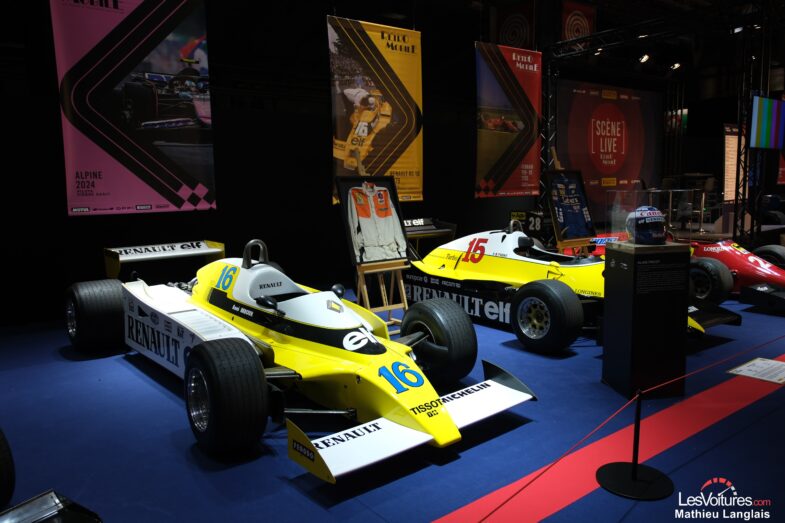
Let’s remember that this 1979 French Grand Prix will forever remain in the annals of F1, also for the mythical duel between René Arnoux and Gilles Villeneuve.
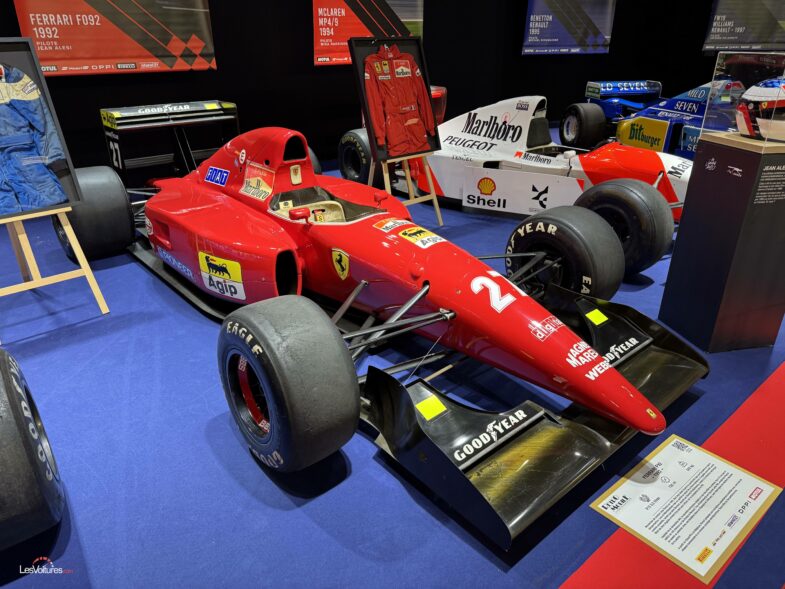
René Arnoux later teamed up with Michele Alboreto at Scuderia Ferrari in 1985, driving the Ferrari 156-85 (V6 Turbo). Much earlier, in 1972, Henri Pescarolo drove the March 71/721-3.
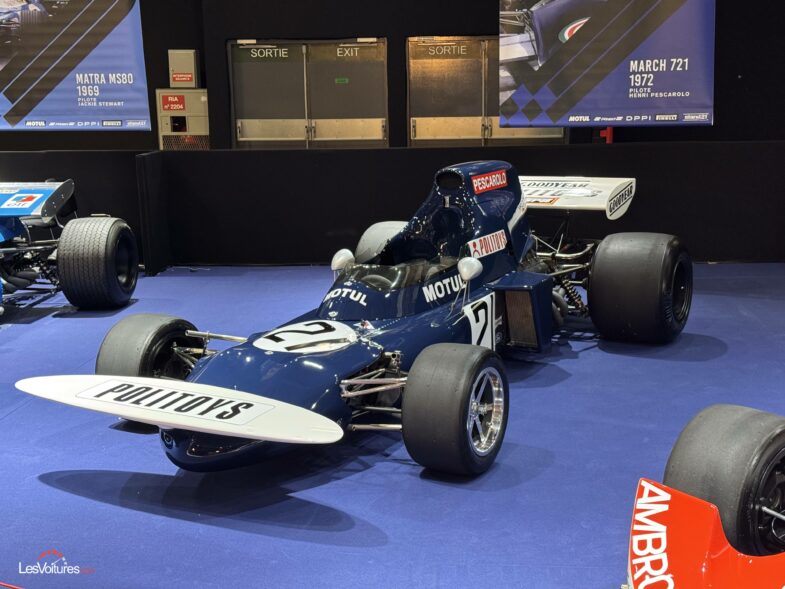
Still on the side of the diamond brand, the exhibition “The tricolor Formula 1, from the 60s to the present day” allows Rétromobile 2025 visitors to discover the 1988 Ligier JS31.
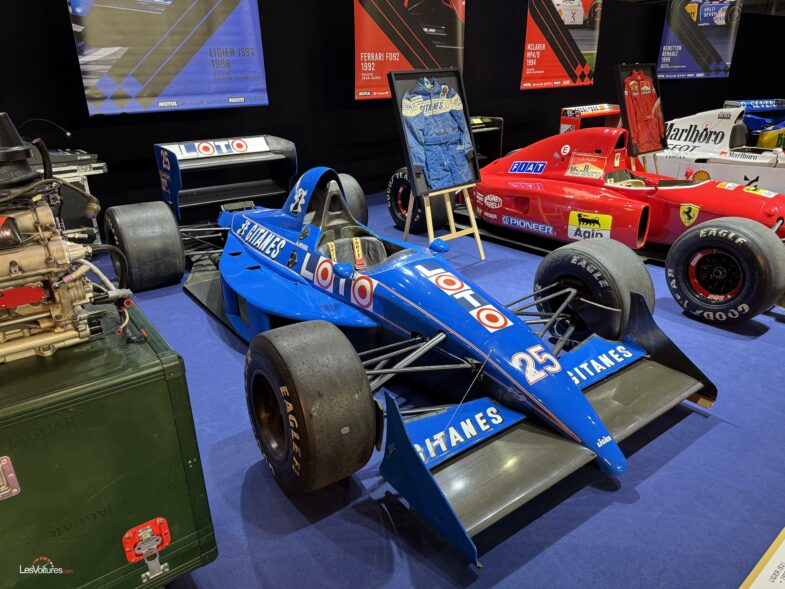
The Williams FW19 powered by a V10 Renault Sport is also “part of the celebration” at Rétromobile, as it enabled Jacques Villeneuve to be crowned F1 World Champion in 1997, against a certain Michael Schumacher.

Moreover, the Benetton B195 powered by a V10 Renault Sport which led Michael Schumacher to his second F1 title in 1995, is not far from the Williams FW19 at Rétromobile.
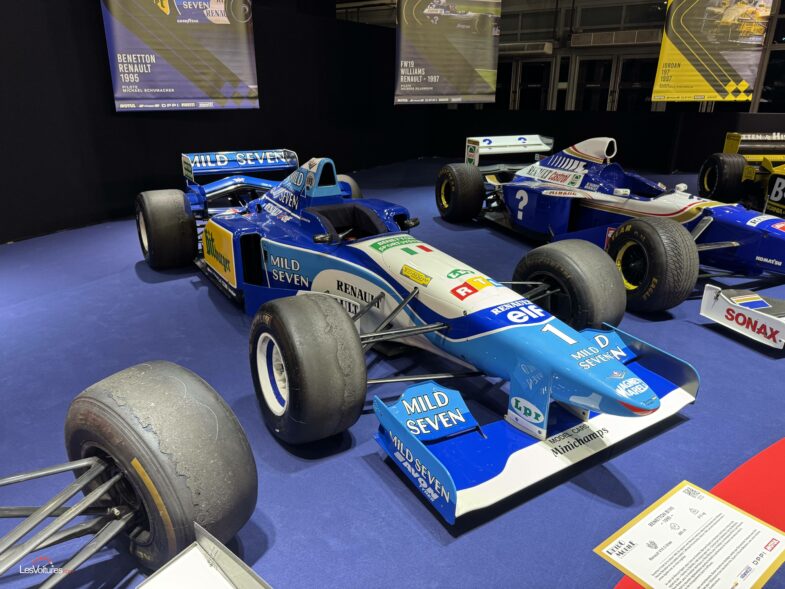
Each F1 single-seater has its story. The Matra MS 80 which allowed Jackie Stewart to win the first of his three F1 titles is another historic single-seater exhibited at Rétromobile 2025.
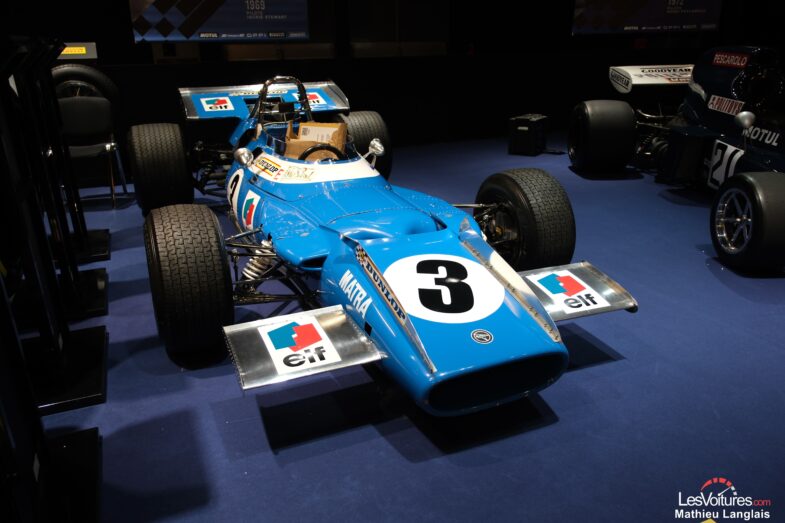
The 1994 McLaren MP4/9A powered by a 3.5 L V10 Peugeot Sport is also exhibited at Rétromobile 2025.
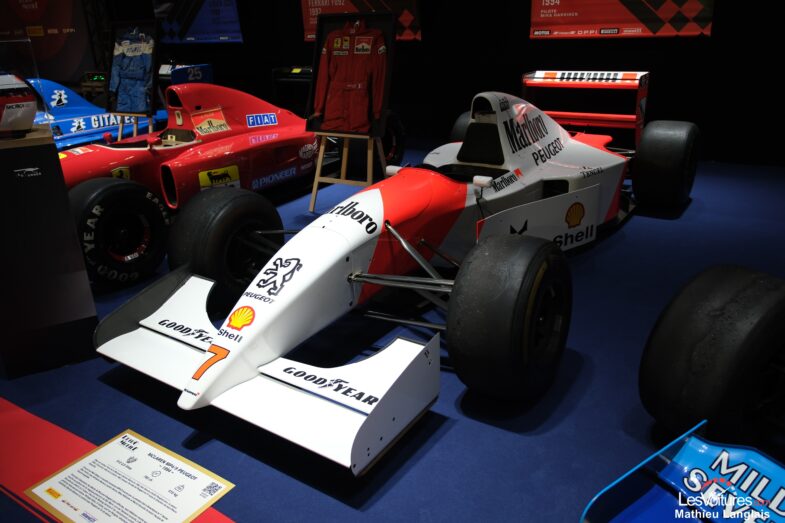
In 1994, this F1 was driven by Mika Häkkinen and Martin Brundle. Note that in 1994, Frenchman Philippe Alliot was the McLaren test driver.

We then come to the Jordan 197 (1997) with its unforgettable snake livery, unlike its V10 Peugeot, unfortunately. That year, it was Ralf Schumacher and Giancarlo Fisichella who suffered due to the lack of performance and reliability of the V10 Peugeot.
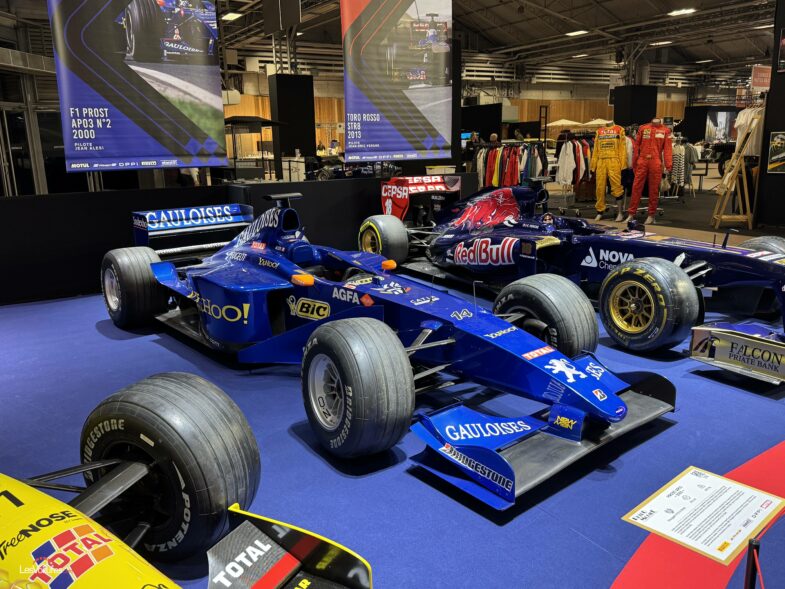
The same goes for the Prost AP03 powered by a V10 Peugeot, entrusted in the 2000 Formula 1 World Championship to Jean Alesi and Nick Heidfeld.

Finally, the Toro Rosso STR8 (2013) powered by a Ferrari V8, driven by Frenchman Jean-Eric Vergne, takes us, thanks to the exhibition “The tricolor Formula 1, from the 60s to the present day”, even further into the modern era of Formula 1.
The editorial team
Photos: LesVoitures.com / TheCarsNews.com

